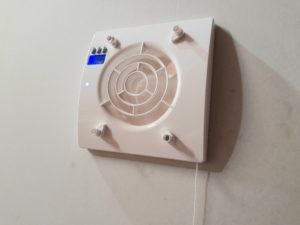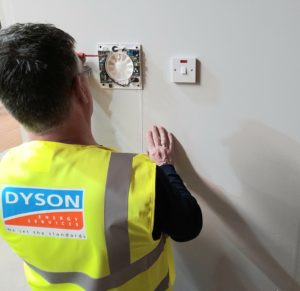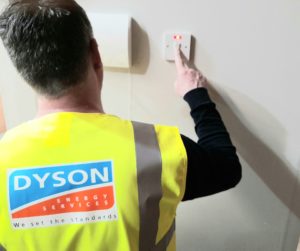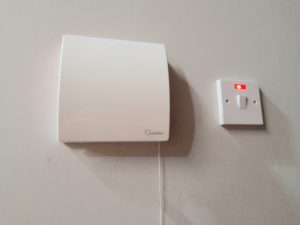Extractor fan ventilation : PAS 2035
New Government driven standards (known as PAS 2035) came into effect on the 1st of July 2021, meaning that householders who qualify for funded insulation, for instance through schemes like the Energy Company Obligation (ECO), can also benefit from the new requirement to have additional ventilation installed in their homes. Insulation and ventilation go hand in hand with each other under PAS 2035 standards and form a wider whole-house approach to energy-saving measures in the home.
There are different types of ventilation all of which help to improve the air quality in your home. This includes mechanical ventilation, in the form of extractor fans.
At the survey stage, your TrustMark registered installer will assess whether your home is suitable for insulation and assess your ventilation requirements at the same time. Should your property require any ventilation measures, in the form of new or replacement fans, then these will be fitted by your installer and funded through the Energy Company Obligation scheme.
In this blog, we will discuss the benefits of ventilation in the home, what extractor fan ventilation is, and how it is installed, so that you have all the information you need at your fingertips.
Benefits of ventilation in the home
Effective ventilation helps keep your home safe and healthy as it helps to control the air quality, especially where improved cavity wall insulation reduces the natural background ventilation of your home.
Additional ventilation in your home has many benefits, including:
- Regulates air flow in your home
- Positive impact on health and wellbeing
- Helps to control the household temperature
- Reduces the risk of condensation, residue, and mould
- Expels air impurities and odours
Extractor fan ventilation: How do they work and where are they fitted?

Programmable extractor fan
Extractor fans work by drawing air from the inside of a room or living space and expelling that air to the outside atmosphere. This in turn causes replacement air to be drawn in from the natural background ventilation of a property and the cycle continues.
The slightly technical term for this process is called air changes and is measured in Litres per second of airflow.
Different-sized spaces have different requirements for minimum air changes as well as spaces where condensation is more prevalent for e.g., bathrooms and kitchens.
These fans require an electricity supply which is very easily found in the existing home electrical installation.
The modern family of fans are designed to run continuously at a low speed, so a continuous process of extraction is maintained. Internal sensors then detect any rises in humidity for e.g., when taking a bath or shower, and the fans will then, automatically, go into “boost” mode, until the excess moisture has been removed.
Modern extractor fan models also have a manual pull cord to put them into boost mode for removing odours.
How is an extractor fan fitted?
There are many types of mechanical ventilation fans on the market but most of them are either wall-mounted or ceiling mounted.
- Both require a hole to be cut through the ceiling or the wall, to accommodate the fan unit, which is a very simple straightforward process.
- A section of ducting is then placed between the fan unit on the inside of the property and the external wall or roof soffit.
- A grill fitted to the outside end of the ducting finishes the installation process.
The whole installation of a single fan should take no more than a couple of hours to complete.

Wiring extractor fan

Power to extractor fan

Installed extractor fan
Benefits of extractor fan ventilation
Dyson Energy Services is currently installing a range of insulation energy-saving measures in homes across the country.
We have a team of qualified, highly skilled Electricians, installing 100s of extractor fans to customers’ properties each week, helping customers to save money on their energy bills while improving the air quality in their homes.
Extractor fans:
- Are designed to comply with the latest building regulations
- Allow the introduction of fresh air into your wet room to disperse moisture, odours, and other airborne pollutants.
- Are quiet and efficient
- Simple to install and operate
- Maintenance free
The extractor fans we install are compact, with an unobtrusive design, designed to offer you energy-efficient ventilation and comfort.
Did you know: The annual cost of running a fan that we install is approximately the equivalent of the costs of three tins of baked beans per year.






